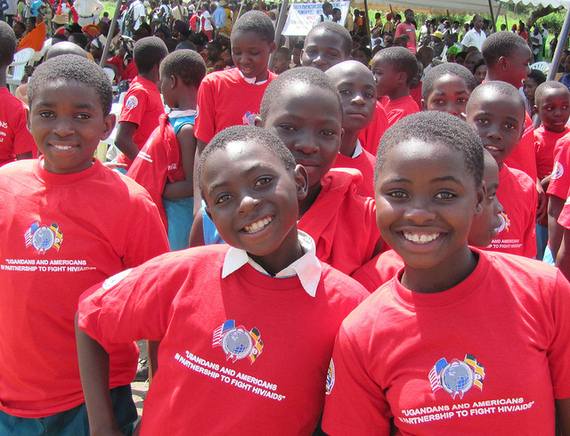
A data revolution is underway at the U.S. President's Emergency Plan for AIDS Relief (PEPFAR). We're using data in transformational ways to prevent more HIV infections and save more lives, ensuring our investments have the greatest impact by targeting lifesaving interventions to the populations and places with the highest HIV/AIDS burden. By collecting local-level granular data, more frequently, and analyzing it through innovative approaches, we're accelerating progress toward reaching the bold HIV prevention and treatment targets set by President Obama last September and, ultimately, achieving our globally agreed goal: end the AIDS epidemic by 2030.
Transparency is one of the critical factors for data to be truly useable and actionable. That's why we are committed to opening as much of our data that we can, while protecting individual and community confidentiality. We've taken great strides to increase transparency, as evidenced by the recently released 2016 Aid Transparency Index, on which PEPFAR's score has risen by more than 40 points since 2013. And we're far from finished. We're continuing to challenge ourselves to open even more data to the public, leading by example to drive greater impact, transparency, and accountability.
Earlier this year, in our quest to provide more granular data, we published 2015 PEPFAR's annual program results (APR) at the subnational level by country. These data display results by district/county across program indicators and through the use of country maps, enabling our partners and stakeholders to view, download, and utilize PEPFAR data in more accessible ways. We're also making data more visually-accessible through geospatial modeling and mapping.
Equally important, to be impactful, data must be timely. That's why this summer PEPFAR will release subnational data that reflect current program implementation. As part of the PEPFAR Oversight and Accountability Review Team (POART) process, we're prioritizing the frequency of data sharing by releasing preliminary data at quarterly intervals instead of waiting for the end of fiscal year final results. In addition, future versions of the PEPFAR Dashboards will go beyond national level data to include state and provincial level data, with quarterly updates that allow for program adjustments in real time. We want our partners and stakeholders to use this data to interrogate and improve their work - and ours.
Building on our data-driven approach, PEPFAR is working with partner country government, civil society, multilateral, and private sector partners through the Global Partnership for Sustainable Development Data to fill critical data gaps and invest in capacity building for data collection and analysis in support of the Sustainable Development Goals (SDGs). Through the Global Partnership, PEPFAR is collaborating with innovators to fuel data-driven decision making, including to drive forward, SDG 3 (improving good health and well-being) and SDG 5 (promoting gender equality). PEPFAR is also working closely with the Millennium Challenge Corporation toward establishing Data Collaboratives for Local Impact in several sub-Saharan African countries. Finally, PEPFAR is joining the recently launched Health Data Collaborative that will address key global health data gaps and challenges. All of these collaborative efforts will use data on HIV/AIDS, global health, gender equality, and economic growth to improve programs and policies
Over the past two years, we've made considerable progress in leveraging data to prevent more new HIV infections and save more lives. But we're not satisfied. PEPFAR remains deeply committed to data-driven decision-making, mutual accountability, transparency, and ensuring our programs have clear and deliberate impact. And amidst the statistics and spreadsheets, we must always remember that each data point represents one of the millions of men, women, and children that we serve. At the end of the day, that's what harnessing the data revolution is all about.
